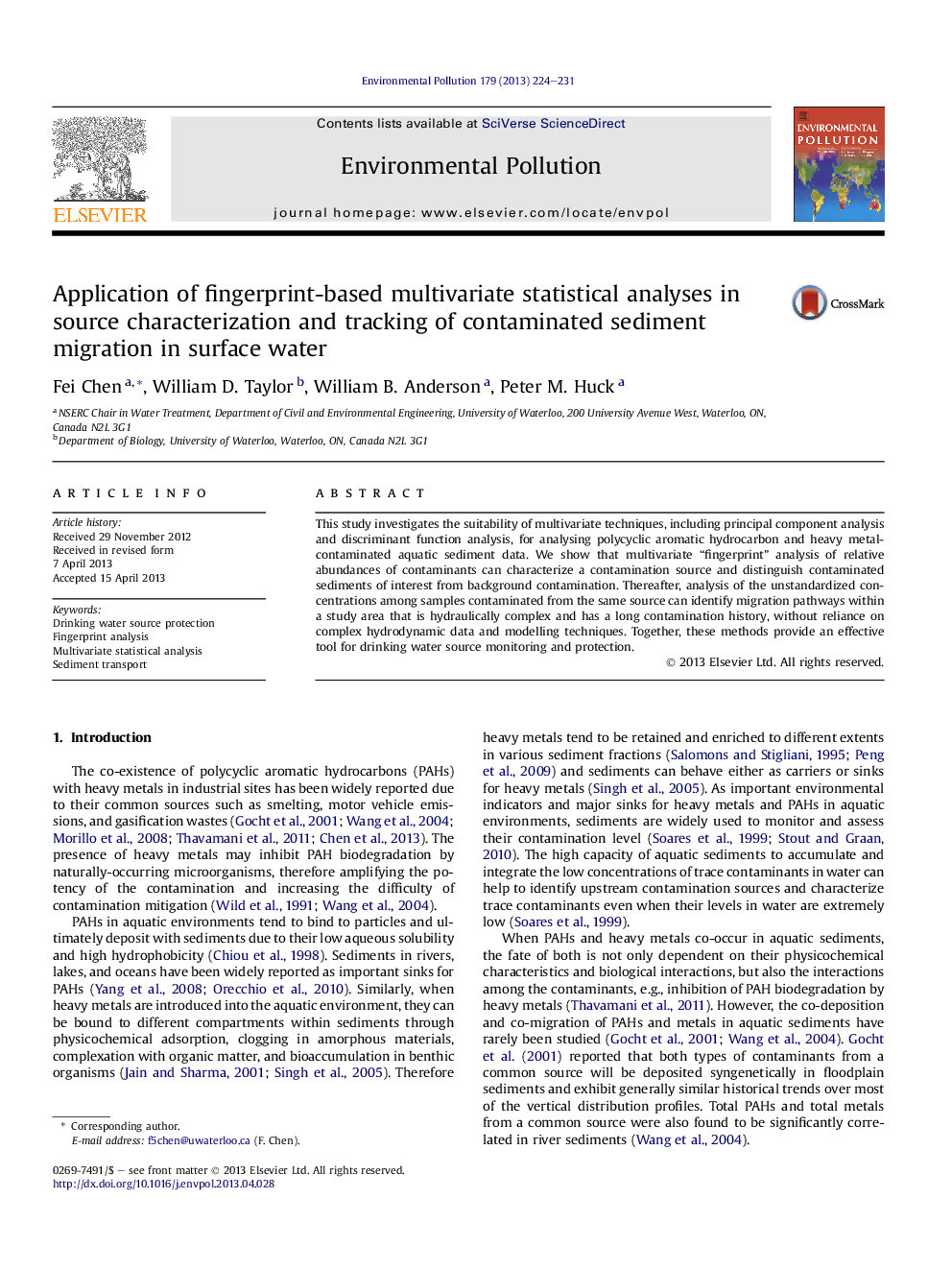| Article ID | Journal | Published Year | Pages | File Type |
|---|---|---|---|---|
| 6318775 | Environmental Pollution | 2013 | 8 Pages |
Abstract
This study investigates the suitability of multivariate techniques, including principal component analysis and discriminant function analysis, for analysing polycyclic aromatic hydrocarbon and heavy metal-contaminated aquatic sediment data. We show that multivariate “fingerprint” analysis of relative abundances of contaminants can characterize a contamination source and distinguish contaminated sediments of interest from background contamination. Thereafter, analysis of the unstandardized concentrations among samples contaminated from the same source can identify migration pathways within a study area that is hydraulically complex and has a long contamination history, without reliance on complex hydrodynamic data and modelling techniques. Together, these methods provide an effective tool for drinking water source monitoring and protection.
Related Topics
Life Sciences
Environmental Science
Environmental Chemistry
Authors
Fei Chen, William D. Taylor, William B. Anderson, Peter M. Huck,
